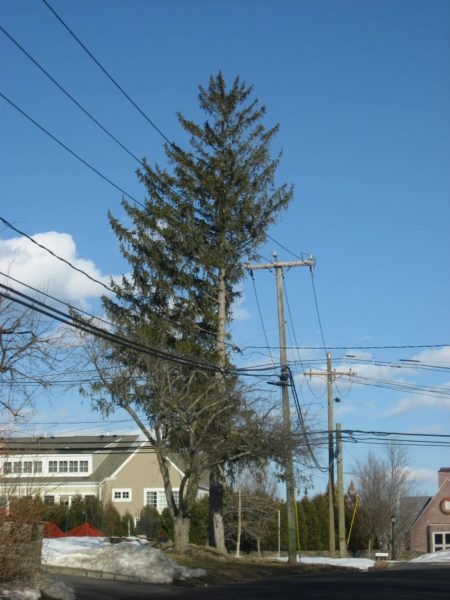By Elizabeth Hopley

In early April of this year, 650 homes and businesses in downtown Greenwich lost power for several hours, not due to an ice storm, lightning strike or falling tree limb, but instead due to…a mylar balloon. The metallic coating conducts electricity damaging the lines and equipment causing power outages and even power surges to customers. This festive party decoration causes thousands of outages across the country every year.
Other disruptive outages are frequently caused by storms. In 2020, tropical storm Isaias caused power outages across Connecticut leaving more than 1 million households without power and without communications (cable, phone) for a week or more.
Balloons, storms and trees are not the problem. Overhead lines and poor planning are. Greenwich needs to address the serious and persistent issue of its vulnerable and outdated infrastructure. This includes unreliability of electrical distribution, constant outages, as well as the aerial visual clutter. It is unacceptable that our infrastructure is so fragile that a child’s balloon can derail it. But it is equally unacceptable that winds, ice, lightning, and falling tree limbs can also derail our services. Severe weather is a fact of life in New England, our infrastructure must be tailored to the realities of the conditions.
Overhead lines are the “horse-and-buggy” of electrical distribution. Overhead lines only detract from the beauty and historic charm of our communities. Eliminating the visual clutter of overhead lines creates a more beautiful, park-like feel with benefits to mental health.
Buried lines are the current standard for all new construction, so it makes sense to update existing infrastructure to the current standard. Trees would not have to be pruned so aggressively and could grow in a more balanced, natural shape, making them more structurally sound and resilient. Improvement projects such as adding or widening sidewalks would be less expensive and more accessible without utility pole obstructions.
Carbon-sequestering pine trees are used as utility poles (In the US, there are 120-180M wood utility poles with about 6M more harvested per year). One study found that stopping deforestation is AS important as reducing carbon emissions to combating climate change.
Studies show that real estate values can increase up to 15% when utilities are undergrounded. Higher real estate sales and valuations create a vibrant economy and more tax revenue. And again, having healthy trees not obstructed by poles increases property values and adds to homeowner’s savings on cooling costs.
Local businesses benefit as customers are drawn to an improved appearance in local business areas. Stronger businesses equal happier, stable business owners, more employees, as well as increased state tax revenue. Reduced interruptions of economic activity are eliminated. Some storm-related outages have had estimates in the billions of dollars in lost economic output.
So why haven’t we moved into the 21st century? Discussion of undergrounding wires has occurred for decades.
One of the most repeated excuses for not embarking on undergrounding has been “It’s too expensive”. Eversource says this is a 30-year project. Interest rates are still historically low and federal funding is available now. Maintenance costs of overhead lines are saved as more lines are buried. Buried lines also result in increases to property values, so that could play into future property assessments, bringing in more tax revenue for towns. This is a long goal, but we need to begin today.
We have also heard “It’s too hard to pinpoint an issue with underground lines and easy with overhead lines”: Actually, there are low-cost sensors that are now routinely placed along underground lines so that issues can be detected quickly. And of course, there will be many fewer maintenance/repair issues in the first place with underground lines.
So now is the time. We need to begin the process, not all areas are conducive for undergrounding, but we know many areas will benefit from it. Let’s begin with downtown neighborhoods where many of our essential services can be found, and our main roadways. Let’s protect our trees while increasing the value of our properties and the beauty and well-being of our community.
Elizabeth Hopley is a 15-year Greenwich resident and a member of the Board of the Greenwich Tree Conservancy.





